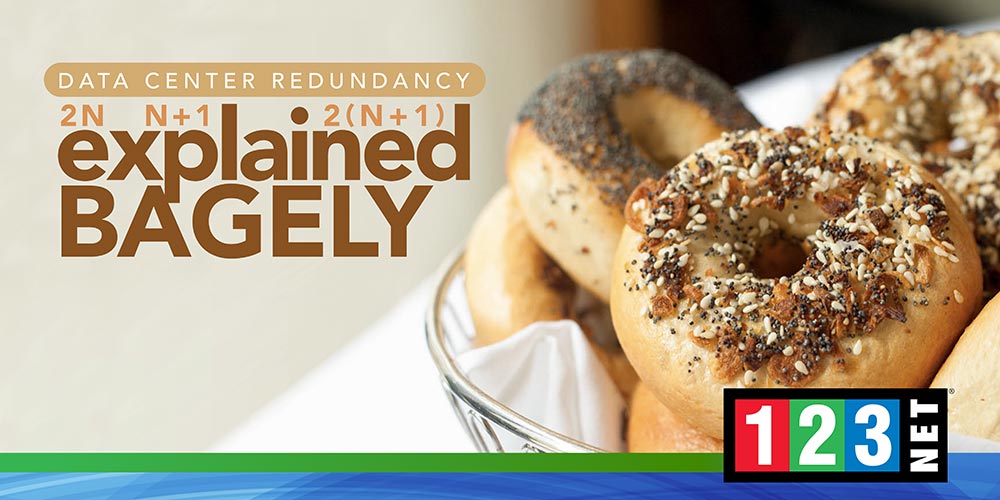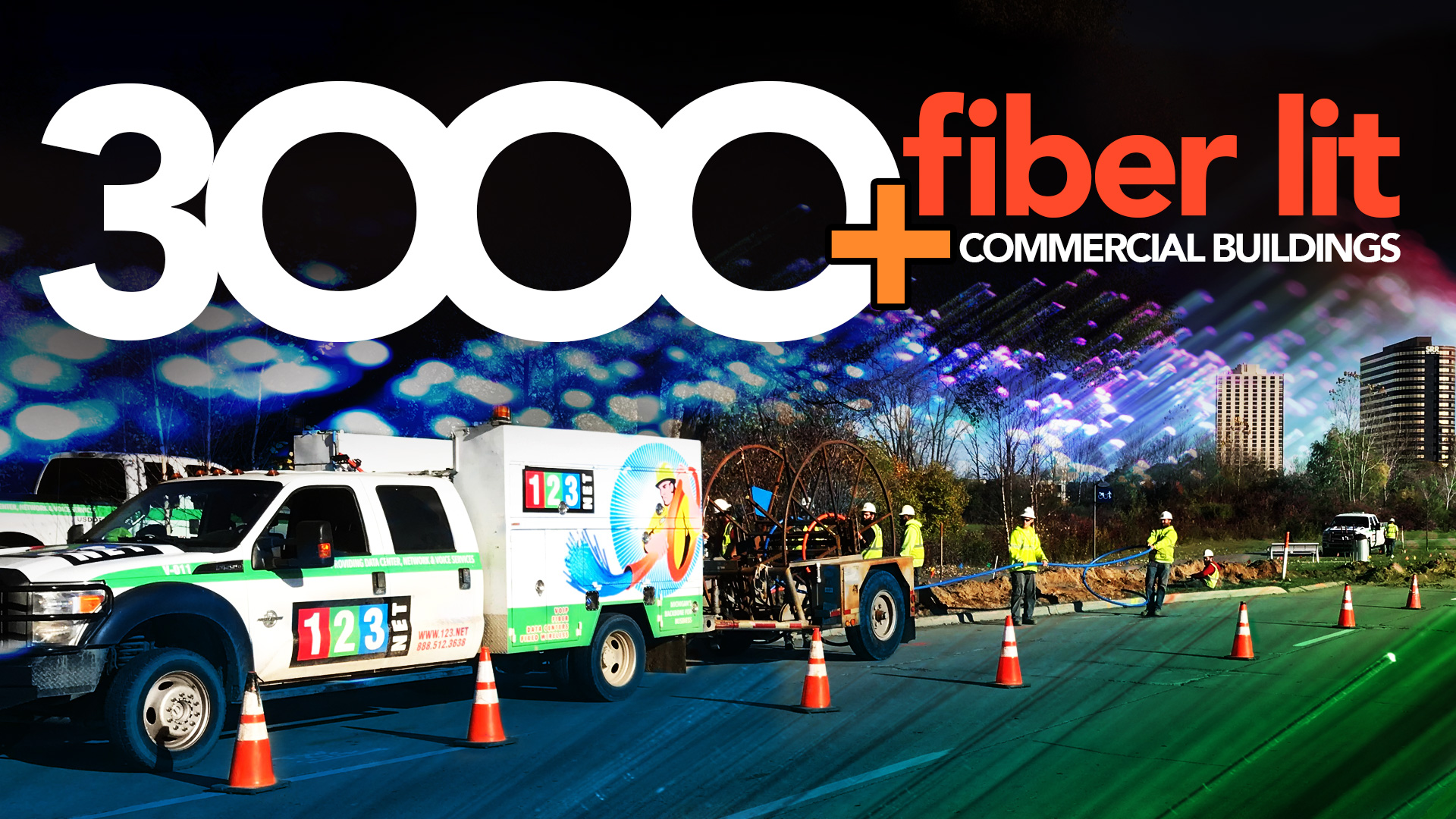
Maintaining a 100% uptime should be a top priority for every data center. If data centers experience power outages, customers can lose thousands of dollars for every second they are down. 123Net heavily invests in 2(N+1) redundant data center infrastructure to protect customers from this.
What Does Redundancy Mean in Data Centers?
When data center providers advertise their facilities’ redundancy, they are referring to the amount of backup power available. If utility failures occur due to severe weather, equipment failure or power line damage, data centers with more redundant power will be better equipped to avoid costly periods of downtime.
Most data centers have systems in place to cut the risk of downtime. These systems can be categorized into N+1, 2N, and 2(N+1).
What is N+1?
A simplified way to look at N+1 is if you were ordering bagels for an office breakfast. There are 20 people working in your office and you decide to order one more bagel than needed just in case. “N” would represent the exact number of bagels you need (20), while the extra bagel is the “+1”. You would be showing up to work with N+1 or 21 bagels.
Applying this to data centers, “N” could stand for the number of uninterruptible power supply (UPS) modules needed. The “+1” would be one more module more than required. Having more power available than needed lowers the chance of downtime. Although N+1 is often called “parallel redundancy” these data centers are not fully redundant because they share common circuitry instead of being sourced from two separate fields.
What about 2N or 2N+1?
If you ordered bagels with a 2N mindset, you would order 20 bagels from one bagel shop and 20 more another shop. The 2N would stand for two times, or double, “N”, the number of bagels you would need. If one of the bagel shop loses your order, you will still have enough.
For data centers, having a 2N redundancy means you have twice the amount of equipment needed with no single point of failure. When extended power outages occur, 2N systems will be maintained without losing power to subsequent systems.
If a data center offers 2(N+1) redundancy that means it has double the amount of power equipment needed, plus an additional UPS module on each side. Referring to the bagel example, you would order 21 bagels from two different shops. If one of the shops doesn’t deliver and there is an issue with one of the bagels that does show up you will still have enough. For this reason, 2(N+1) data centers offer the highest guaranteed uptime.
123Net’s four 2(N+1) redundant data centers come with a 100 percent power uptime Service Level Agreement. If your business cannot afford losing access to mission-critical applications, you should consider collocating at 123Net. To learn more power redundancy, schedule a data center tour with 123Net today. Visit our colocation page today




